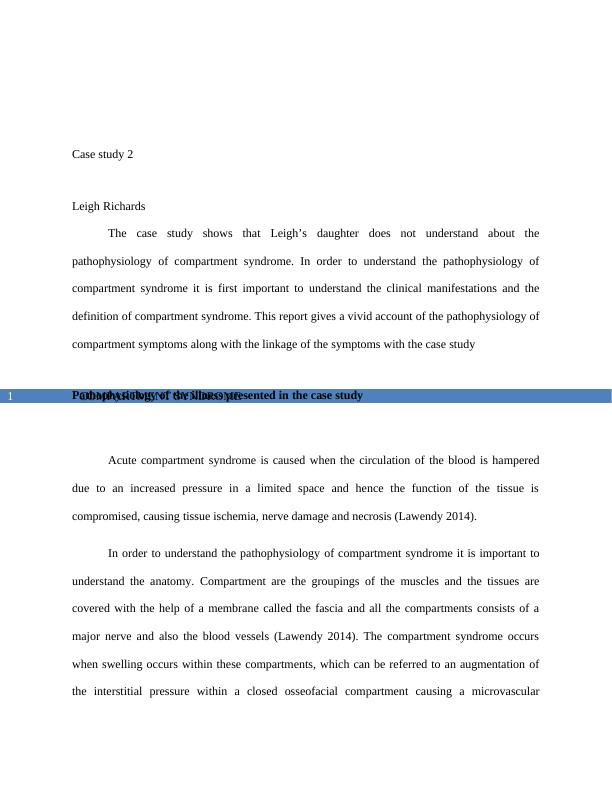Compartment Syndrome Assignment PDF
9 Pages1915 Words33 Views
Added on 2021-05-31
Compartment Syndrome Assignment PDF
Added on 2021-05-31
ShareRelated Documents
End of preview
Want to access all the pages? Upload your documents or become a member.
CNA253 AT2 Scenario: Mrs Gwen Boren Assignment 2022
|8
|2244
|10
Pain Management with Morphine for Compartment Syndrome after Lower Limb Fracture
|8
|1886
|307
Health and Homeostasis
|5
|945
|366
Compartment Syndrome and Lower Leg Fracture: Nursing Management and Pharmacological Interventions
|8
|1140
|406
Compartment Syndrome and its Treatment
|5
|2418
|31
Appendicitis: Pathophysiology, Nursing Care, Growth & Development Theories, Family Centered Care and Effects of Hospitalization on Child and Family
|9
|2661
|335



